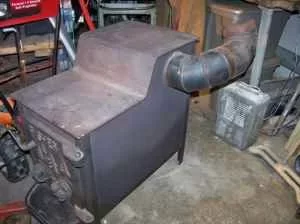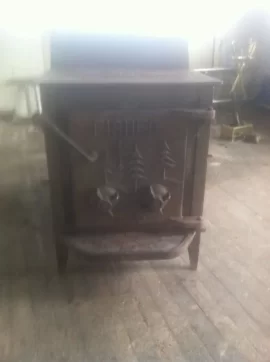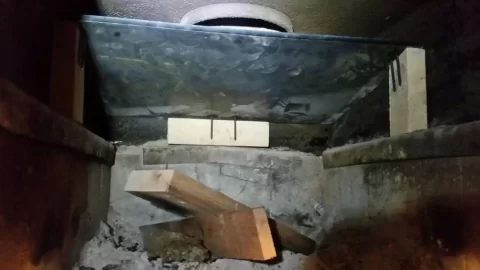Welcome to the Forum,
I believe the stove pictured is a Papa Bear. (by the exposed area of side sheet around pipe) A good picture of the front will determine model for sure. But I'm betting on a Papa. (Mama takes up to 24 inch log, Papa takes 30 inch)
You already have a good design that prevents excessive loss.
A baffle will change the flow through the stove, so could still improve it some. (same design baffle as rear or top vent)
Depends on chimney. If you have a 6 inch insulated flue, yes I'd try it. If you have a larger flue, it's going to get dirty. Not excessive creosote, but will require more frequent cleaning.
Here's a picture of a side vented Mama. Notice the much smaller area around pipe on the side. The door will also cover the entire front of stove. Papa will have exposed front sheet at door sides between door and angle iron corners.

I believe the stove pictured is a Papa Bear. (by the exposed area of side sheet around pipe) A good picture of the front will determine model for sure. But I'm betting on a Papa. (Mama takes up to 24 inch log, Papa takes 30 inch)
You already have a good design that prevents excessive loss.
A baffle will change the flow through the stove, so could still improve it some. (same design baffle as rear or top vent)
Depends on chimney. If you have a 6 inch insulated flue, yes I'd try it. If you have a larger flue, it's going to get dirty. Not excessive creosote, but will require more frequent cleaning.
Here's a picture of a side vented Mama. Notice the much smaller area around pipe on the side. The door will also cover the entire front of stove. Papa will have exposed front sheet at door sides between door and angle iron corners.




 !
! 


